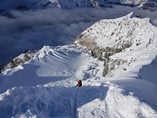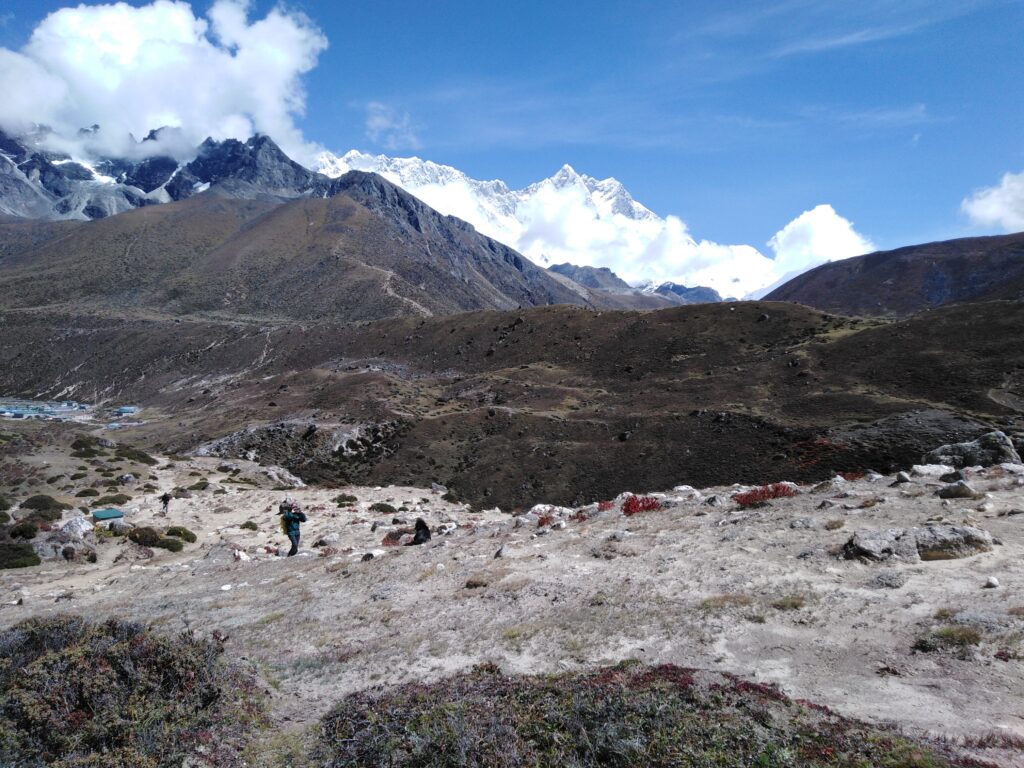
Comparative Guide for Trekkers

Trekking in Nepal offers some of the most breathtaking scenery in the world, and two of the most iconic destinations for trekkers are Annapurna Base Camp (ABC) and Everest Base Camp (EBC). Both treks provide unique experiences, each with its own set of challenges, rewards, and highlights. This article explores the key differences between these two legendary trekking routes to help you decide which might be the better fit for your next adventure. I started with Annapurna base camp and a year later went to Everest base camp – here are my thoughts:
Location and Accessibility
Annapurna Base Camp (ABC):
– Location: Situated in the Annapurna Conservation Area in central Nepal.
– Starting Point: Most treks to ABC begin in the city of Pokhara, a popular tourist hub.
– Accessibility: The trek to ABC is generally more accessible and can be completed in 7-12 days. The trek begins with a short drive from Pokhara to Nayapul or another nearby village.
Everest Base Camp (EBC):
– Location: Located in the Sagarmatha National Park in northeastern Nepal.
– Starting Point: Trekkers typically fly into Lukla, a small town with a notoriously challenging airport, to begin the trek.
– Accessibility: The EBC trek is longer, taking about 12-16 days to complete. The flight to Lukla can be subject to weather delays, adding an element of unpredictability to the journey.
Scenery and Landscape
Annapurna Base Camp:
– Diverse Terrain: The ABC trek features lush forests, terraced fields, and high alpine landscapes. The route passes through charming Gurung and Magar villages.
– Mountain Views: Trekkers are rewarded with close-up views of Annapurna I, Machapuchare (Fishtail), and other peaks in the Annapurna range. The trek culminates in a spectacular amphitheater of towering mountains.
Everest Base Camp:
– Dramatic High-Altitude Landscapes: The EBC trek traverses through varied terrains including dense forests, glacial moraines, and high-altitude desert.
– Iconic Peaks: Along the route, trekkers enjoy views of some of the world’s tallest mountains, including Everest, Lhotse, Nuptse, and Ama Dablam. The final destination at EBC offers a close-up view of the Khumbu Ice fall.
Cultural Experience
Annapurna Base Camp:
– Ethnic Diversity: The trek provides a rich cultural experience as it passes through villages inhabited by diverse ethnic groups, including Gurungs and Magars.
– Teahouse Experience: Trekkers can stay in traditional teahouses and lodges, experiencing local hospitality and cuisine.
Everest Base Camp:
– Sherpa Culture: The EBC trek is renowned for its immersion in Sherpa culture. Trekkers pass through villages like Namche Bazaar and Tengboche, where they can visit monasteries and learn about the Sherpa way of life.
– Teahouse Experience: Similar to ABC, the EBC route offers teahouse accommodations, allowing trekkers to rest and refuel in local lodges.
Difficulty and Altitude
Annapurna Base Camp:
– Moderate Difficulty: The ABC trek is considered moderately challenging. While it involves significant elevation gain, the highest point at ABC is around 4,130 meters (13,550 feet).
– Altitude Sickness: Less of a concern compared to EBC due to the lower maximum elevation. Proper acclimatization is still necessary.
Everest Base Camp:
– High Difficulty: The EBC trek is more physically demanding, with a higher maximum elevation of 5,364 meters (17,598 feet) at the base camp.
– Altitude Sickness: A major concern on this trek. Trekkers must take adequate time to acclimatize to avoid altitude sickness.
Cost
Annapurna Base Camp:
– Generally Lower Cost: The overall cost of the ABC trek is typically lower. This is due to shorter duration, easier accessibility, and lower permit fees.
– Permits: Trekkers need the Annapurna Conservation Area Permit (ACAP) and the Trekkers’ Information Management System (TIMS) card.
Everest Base Camp:
– Higher Cost: The EBC trek tends to be more expensive, primarily due to the cost of the Lukla flight and higher daily expenses in the remote Khumbu region.
– Permits: Trekkers require the Sagarmatha National Park Permit and a TIMS card.
Conclusion
Both Annapurna Base Camp and Everest Base Camp treks offer unparalleled trekking experiences, each with its own unique allure. ABC is ideal for those looking for a shorter, less demanding trek with rich cultural experiences and diverse landscapes. On the other hand, EBC is perfect for those seeking the challenge of trekking to the base of the world’s highest mountain, immersed in the heart of the Himalayas and Sherpa culture.
Whichever trek you choose, you are sure to be rewarded with stunning scenery, unforgettable experiences, and the sense of achievement that comes from exploring some of the world’s most iconic trails.
For more information please contact Ramsay Banna










[…] post Annapurna Base Camp vs. Everest Base Camp: A Comparative Guide by Ramsay Banna appeared first on ezine […]